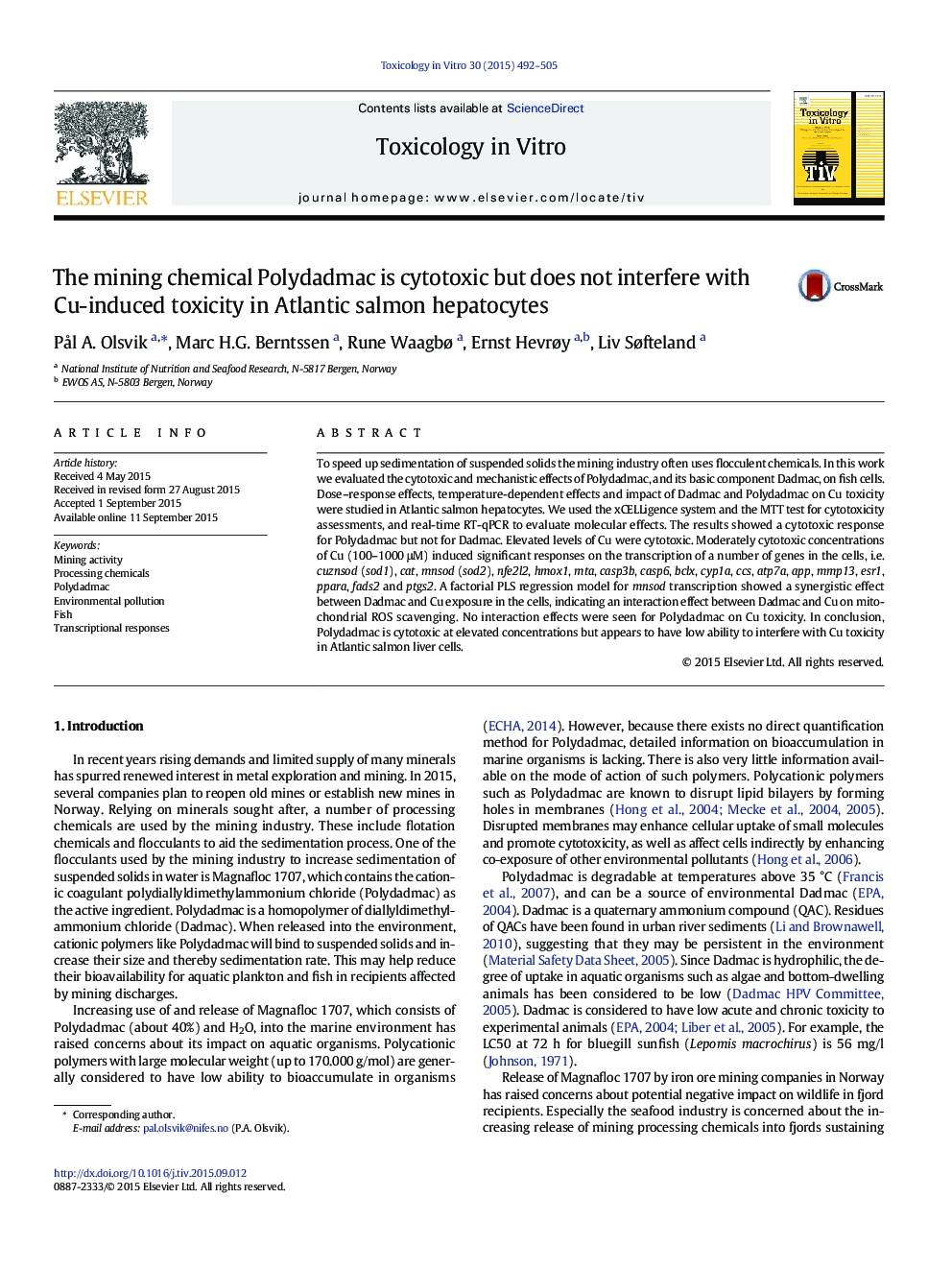| Article ID | Journal | Published Year | Pages | File Type |
|---|---|---|---|---|
| 2602432 | Toxicology in Vitro | 2015 | 14 Pages |
•We examine cytotoxicity and mechanistic effects of Polydadmac on fish cells.•Polydadmac but not Dadmac is cytotoxic to Atlantic salmon hepatocytes.•Synergism was seen between Dadmac and Cu on mnsod.•Polydadmac does not interfere with Cu toxicity.
To speed up sedimentation of suspended solids the mining industry often uses flocculent chemicals. In this work we evaluated the cytotoxic and mechanistic effects of Polydadmac, and its basic component Dadmac, on fish cells. Dose–response effects, temperature-dependent effects and impact of Dadmac and Polydadmac on Cu toxicity were studied in Atlantic salmon hepatocytes. We used the xCELLigence system and the MTT test for cytotoxicity assessments, and real-time RT-qPCR to evaluate molecular effects. The results showed a cytotoxic response for Polydadmac but not for Dadmac. Elevated levels of Cu were cytotoxic. Moderately cytotoxic concentrations of Cu (100–1000 μM) induced significant responses on the transcription of a number of genes in the cells, i.e. cuznsod (sod1), cat, mnsod (sod2), nfe2l2, hmox1, mta, casp3b, casp6, bclx, cyp1a, ccs, atp7a, app, mmp13, esr1, ppara, fads2 and ptgs2. A factorial PLS regression model for mnsod transcription showed a synergistic effect between Dadmac and Cu exposure in the cells, indicating an interaction effect between Dadmac and Cu on mitochondrial ROS scavenging. No interaction effects were seen for Polydadmac on Cu toxicity. In conclusion, Polydadmac is cytotoxic at elevated concentrations but appears to have low ability to interfere with Cu toxicity in Atlantic salmon liver cells.
